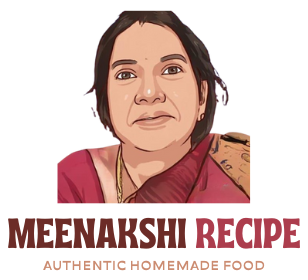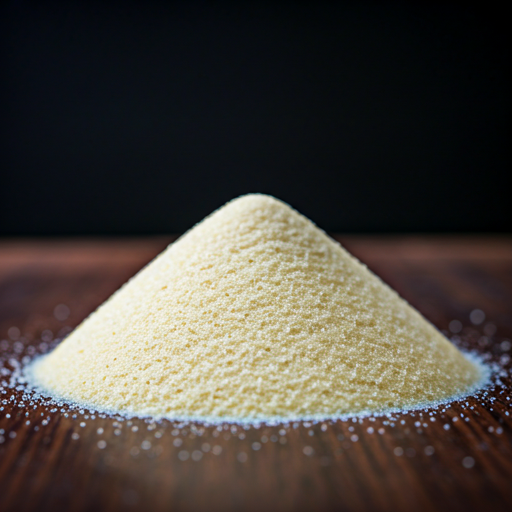Rava, also known as semolina, is a coarse flour made from durum wheat. Commonly used in Indian, Mediterranean, and Middle Eastern cuisines, rava is a versatile ingredient found in dishes ranging from savory delights like upma and idli to sweet treats like rava kesari and halwa. Besides its culinary versatility, rava offers numerous health benefits that make it a staple in many households.
In this blog, we’ll explore the nutritional value, health benefits, and different ways to incorporate rava into your diet.
Nutritional Value of Rava
Rava is a nutrient-dense food that provides a good balance of carbohydrates, proteins, and essential minerals. Here’s an approximate nutritional breakdown of 100 grams of rava:
- Calories: 360 kcal
- Protein: 12 grams
- Carbohydrates: 72 grams
- Fiber: 3 grams
- Fat: 1 gram
- Calcium: 17 mg
- Iron: 1.3 mg
- Magnesium: 47 mg
- Potassium: 186 mg
Rava is low in fat, making it an ideal ingredient for health-conscious individuals. It is also a good source of energy and supports overall well-being.
Health Benefits of Rava
Rich Source of Energy
Rava is high in carbohydrates, making it an excellent source of energy. It provides the body with the fuel needed for daily activities, which is why it is often consumed as a breakfast option.Promotes Digestive Health
The fiber content in rava helps improve digestion and prevents constipation. Its coarse texture aids in the smooth movement of food through the digestive tract, promoting better gut health.Supports Weight Management
Rava is low in fat and contains slow-digesting carbohydrates, which help keep you feeling full for longer. This helps in controlling hunger pangs and managing calorie intake, making it beneficial for weight management.Rich in Iron
Iron is essential for the production of hemoglobin and the transport of oxygen in the blood. Rava contains a good amount of iron, which helps prevent anemia and boosts energy levels.Improves Bone Health
Rava is a moderate source of calcium and magnesium, which are vital for maintaining strong and healthy bones. Including rava in your diet can help reduce the risk of bone-related issues like osteoporosis.Regulates Blood Sugar Levels
The low glycemic index of rava makes it a suitable option for people with diabetes. Its slow-digesting carbohydrates prevent sudden spikes in blood sugar levels, providing steady energy throughout the day.Boosts Immune System
Rava contains essential nutrients like zinc and magnesium that help strengthen the immune system. These minerals play a vital role in protecting the body against infections and diseases.Good for Heart Health
Being low in fat and cholesterol, rava is heart-friendly. Additionally, its fiber content helps in reducing bad cholesterol (LDL) levels, thereby supporting cardiovascular health.Supports Muscle Growth
The protein content in rava aids in muscle repair and growth. This makes it an excellent food choice for those looking to increase their protein intake, especially vegetarians.
Culinary Uses of Rava
Rava is an incredibly versatile ingredient used in various sweet and savory dishes. Here are some popular ways to incorporate rava into your meals:
Breakfast Dishes:
- Upma: A savory porridge made with roasted rava, vegetables, and spices.
- Rava Idli: Steamed cakes made with rava, yogurt, and seasoning.
Desserts:
- Rava Kesari: A popular South Indian dessert made with rava, sugar, ghee, and saffron.
- Halwa: A rich, sweet dish prepared by roasting rava in ghee and cooking it with sugar and milk.
Snacks:
- Rava Dosa: A thin, crispy crepe made with rava, rice flour, and spices.
- Pakoras: Deep-fried fritters coated with a rava batter.
Baking:
- Rava is often used in baking cookies and cakes to add texture.
Porridge:
- Rava porridge is a simple, nutritious option for babies and adults alike.
Coating for Frying:
- Rava is used as a crispy coating for fried foods like cutlets and fish.
Tips for Cooking with Rava
- Roast for Better Flavor: Always roast rava on low to medium heat before using it in recipes to enhance its nutty flavor and aroma.
- Store Properly: Keep rava in an airtight container to prevent it from absorbing moisture and developing a stale taste.
- Combine with Vegetables: Add chopped vegetables to rava dishes like upma to increase their nutritional value.
Things to Keep in Mind
- Portion Control: While rava is nutritious, it is also calorie-dense. Consuming it in moderation is key, especially for those on a calorie-restricted diet.
- Gluten Content: Rava contains gluten, so it is not suitable for individuals with gluten intolerance or celiac disease.
- Balance with Protein: Rava is high in carbohydrates, so pair it with protein-rich foods like lentils, nuts, or dairy to make a balanced meal.
Conclusion
Rava is a nutrient-rich, versatile ingredient that can be used in a variety of dishes to suit different tastes and dietary needs. Its high energy content, along with its benefits for digestion, heart health, and weight management, makes it a staple in many kitchens. Whether you enjoy it as a breakfast dish, a snack, or a dessert, rava is sure to add flavor, texture, and nutrition to your meals.
So, the next time you’re looking for a wholesome, satisfying ingredient to cook with, don’t forget to reach for rava!

